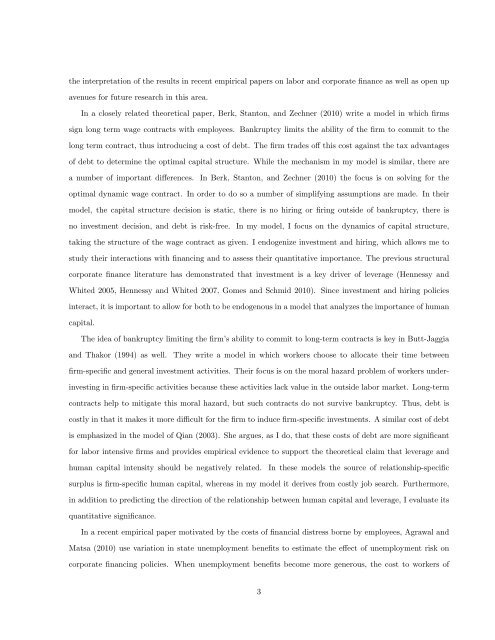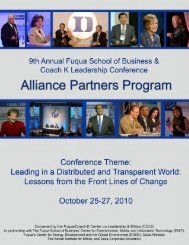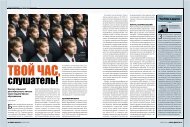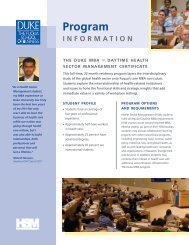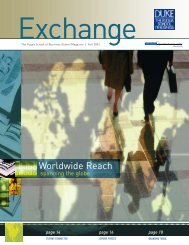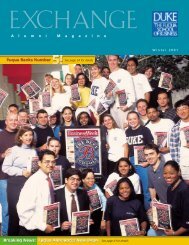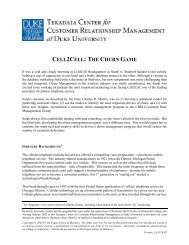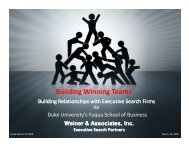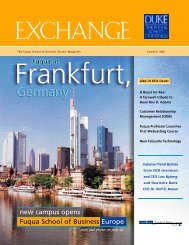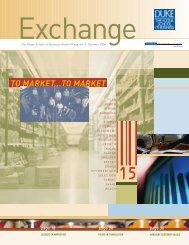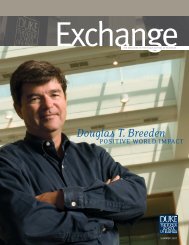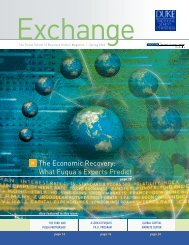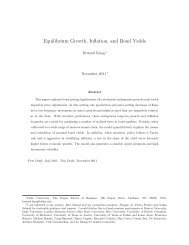A Structural Model of Human Capital and Leverage - Duke ...
A Structural Model of Human Capital and Leverage - Duke ...
A Structural Model of Human Capital and Leverage - Duke ...
You also want an ePaper? Increase the reach of your titles
YUMPU automatically turns print PDFs into web optimized ePapers that Google loves.
the interpretation <strong>of</strong> the results in recent empirical papers on labor <strong>and</strong> corporate finance as well as open up<br />
avenues for future research in this area.<br />
In a closely related theoretical paper, Berk, Stanton, <strong>and</strong> Zechner (2010) write a model in which firms<br />
sign long term wage contracts with employees. Bankruptcy limits the ability <strong>of</strong> the firm to commit to the<br />
long term contract, thus introducing a cost <strong>of</strong> debt. The firm trades <strong>of</strong>f this cost against the tax advantages<br />
<strong>of</strong> debt to determine the optimal capital structure. While the mechanism in my model is similar, there are<br />
a number <strong>of</strong> important differences. In Berk, Stanton, <strong>and</strong> Zechner (2010) the focus is on solving for the<br />
optimal dynamic wage contract. In order to do so a number <strong>of</strong> simplifying assumptions are made. In their<br />
model, the capital structure decision is static, there is no hiring or firing outside <strong>of</strong> bankruptcy, there is<br />
no investment decision, <strong>and</strong> debt is risk-free. In my model, I focus on the dynamics <strong>of</strong> capital structure,<br />
taking the structure <strong>of</strong> the wage contract as given. I endogenize investment <strong>and</strong> hiring, which allows me to<br />
study their interactions with financing <strong>and</strong> to assess their quantitative importance. The previous structural<br />
corporate finance literature has demonstrated that investment is a key driver <strong>of</strong> leverage (Hennessy <strong>and</strong><br />
Whited 2005, Hennessy <strong>and</strong> Whited 2007, Gomes <strong>and</strong> Schmid 2010). Since investment <strong>and</strong> hiring policies<br />
interact, it is important to allow for both to be endogenous in a model that analyzes the importance <strong>of</strong> human<br />
capital.<br />
The idea <strong>of</strong> bankruptcy limiting the firm’s ability to commit to long-term contracts is key in Butt-Jaggia<br />
<strong>and</strong> Thakor (1994) as well. They write a model in which workers choose to allocate their time between<br />
firm-specific <strong>and</strong> general investment activities. Their focus is on the moral hazard problem <strong>of</strong> workers under-<br />
investing in firm-specific activities because these activities lack value in the outside labor market. Long-term<br />
contracts help to mitigate this moral hazard, but such contracts do not survive bankruptcy. Thus, debt is<br />
costly in that it makes it more difficult for the firm to induce firm-specific investments. A similar cost <strong>of</strong> debt<br />
is emphasized in the model <strong>of</strong> Qian (2003). She argues, as I do, that these costs <strong>of</strong> debt are more significant<br />
for labor intensive firms <strong>and</strong> provides empirical evidence to support the theoretical claim that leverage <strong>and</strong><br />
human capital intensity should be negatively related. In these models the source <strong>of</strong> relationship-specific<br />
surplus is firm-specific human capital, whereas in my model it derives from costly job search. Furthermore,<br />
in addition to predicting the direction <strong>of</strong> the relationship between human capital <strong>and</strong> leverage, I evaluate its<br />
quantitative significance.<br />
In a recent empirical paper motivated by the costs <strong>of</strong> financial distress borne by employees, Agrawal <strong>and</strong><br />
Matsa (2010) use variation in state unemployment benefits to estimate the effect <strong>of</strong> unemployment risk on<br />
corporate financing policies. When unemployment benefits become more generous, the cost to workers <strong>of</strong><br />
3


